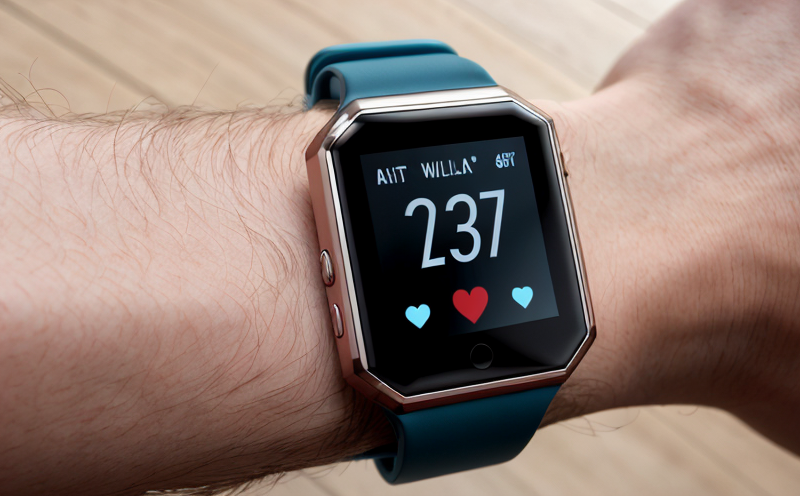ISO 10993-10 Skin Irritation Testing for Wearable Devices
The ISO 10993-10 standard provides a critical framework for assessing the skin irritation potential of medical devices, including wearable and digital health devices. This testing is essential to ensure that devices do not cause adverse reactions when in contact with human skin. As wearables increasingly incorporate materials and components that come into direct or indirect contact with the body, it becomes imperative to evaluate their biocompatibility.
The test protocol outlined in ISO 10993-10 involves several steps, including selection of appropriate test substances, preparation of the test specimens, incubation periods, and evaluation criteria. The aim is to determine whether there will be any adverse effects on the skin if the device comes into contact with it for extended periods.
The importance of this testing cannot be overstated, especially in sectors like healthcare where patient safety is paramount. Compliance with such standards not only protects patients but also ensures that manufacturers can market their products confidently in a global market. This service offers comprehensive support to clients ensuring they meet all regulatory requirements associated with the ISO 10993-10 standard.
Our laboratory adheres strictly to international norms and uses state-of-the-art facilities equipped with advanced testing equipment. Our team comprises experienced professionals who understand the nuances of this type of testing, providing accurate results that are reliable and repeatable.
- Comprehensive Support: We offer full-service solutions covering all aspects of ISO 10993-10 skin irritation testing for wearable devices.
- Regulatory Compliance: Ensuring your products meet stringent regulatory standards is our priority.
- Advanced Equipment: Utilizing cutting-edge technology ensures precise and accurate results.
- Expert Team: Our knowledgeable staff provides guidance throughout the testing process.
The rigorous nature of these tests underscores their significance. They help identify any potential risks early in product development, allowing for necessary modifications before commercial release. This proactive approach not only enhances patient safety but also reduces post-market recalls and liability issues.
In conclusion, ISO 10993-10 skin irritation testing is a crucial step in ensuring the safe use of wearable devices. By adhering to these standards, manufacturers demonstrate their commitment to quality and reliability, ultimately contributing to better healthcare outcomes.
Why It Matters
The importance of ISO 10993-10 skin irritation testing for wearable devices cannot be overstated. These tests are designed to protect users by ensuring that the materials and components used in wearables do not cause adverse reactions on human skin. The consequences of failing to conduct such tests can range from minor discomfort to severe health issues, which could lead to product recalls or even legal action.
From a compliance perspective, adherence to these standards is mandatory for manufacturers operating within the medical device industry. Non-compliance can result in fines, reputational damage, and loss of market share. Moreover, ensuring that your products meet these requirements can enhance consumer trust, leading to greater acceptance and adoption rates among potential customers.
Technological advancements have led to an explosion in wearable technology offerings. However, this growth also brings challenges related to safety and efficacy. With increasing complexity comes the need for more stringent quality controls at every stage of product development. ISO 10993-10 skin irritation testing serves as one such control measure that helps maintain high standards across all phases.
Additionally, given the wide range of materials used in wearable devices—from textiles to electronics—the variability makes it necessary for each component to undergo thorough evaluation. By incorporating this testing into your product lifecycle management strategy, you ensure consistent quality and reliability throughout production runs.
In summary, ISO 10993-10 skin irritation testing plays a vital role both in safeguarding users' health and ensuring regulatory compliance while fostering innovation within the industry.
Why Choose This Test
- Promotes Safety: Ensures that wearable devices do not cause skin irritation or allergic reactions.
- Facilitates Compliance: Helps meet regulatory requirements set by various bodies around the world.
- Enhances Reputation: Demonstrating commitment to quality and safety builds trust with consumers.
- Reduces Risks: Identifies potential issues early in the product development cycle, reducing risks associated with post-market recalls.
- Supports Innovation: Encourages continuous improvement by providing data on performance under real-world conditions.
By choosing this test, you not only comply with international standards but also contribute to enhancing public health. It is an investment in your brand's future and a testament to your dedication towards delivering safe and effective products.





